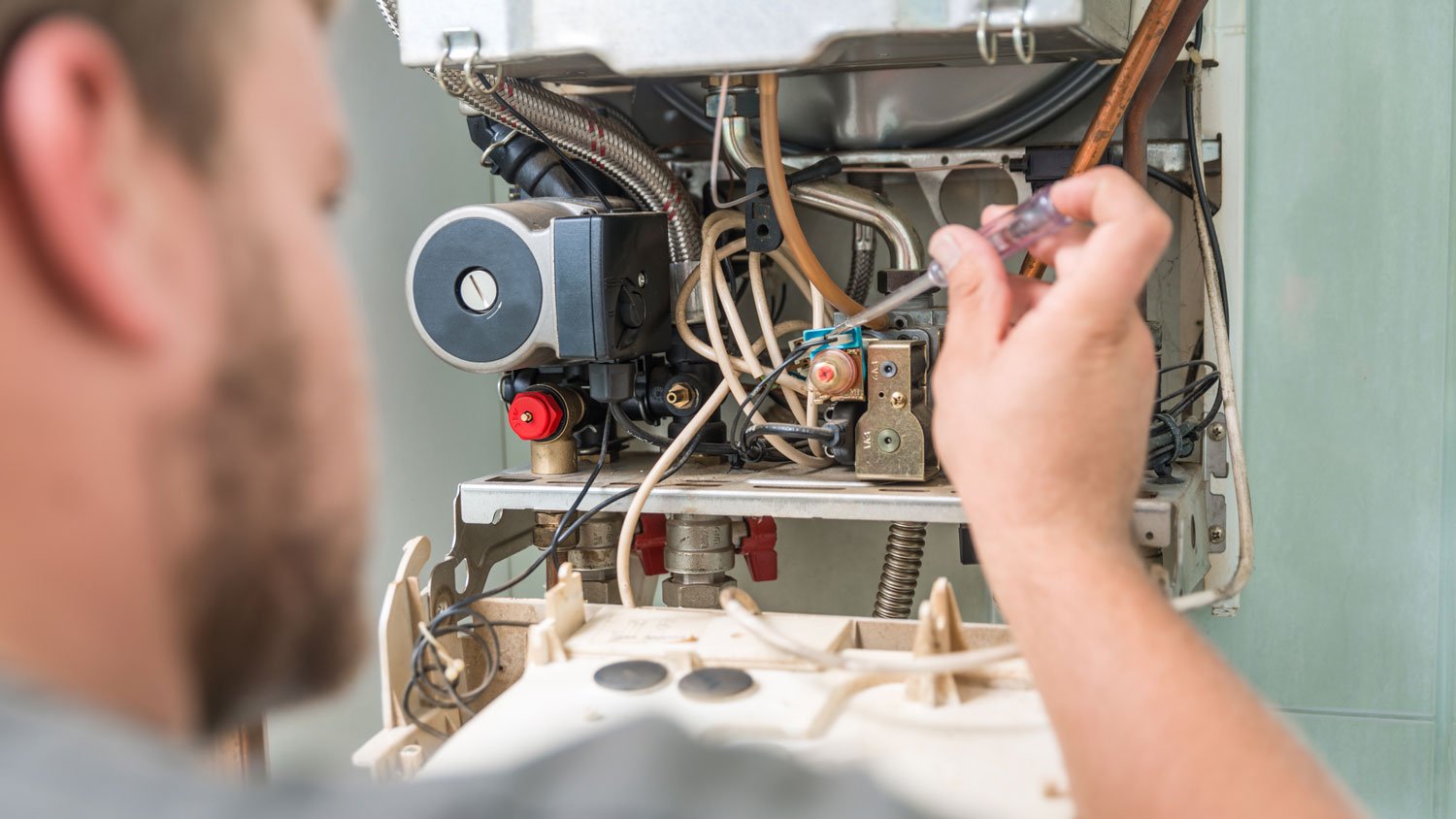Pros and Cons of Dual Fuel Heat Pumps
A dual fuel heating system might be the two-for-one combo you need


Dual fuel heating systems are energy efficient and adaptable
These systems are budget-friendly but have a high upfront cost of $2,500 to $10,000
People who experience harsh climates and frequent temperature fluctuations benefit most from this type of system
Those in the market for a new heating system may have heard about dual fuel heating systems. The internet says they’re the talk of the town, but are they worth the hype? If your most recent energy bill had your pulse jumping, or your home is constantly three degrees short of comfort, then dual fuel systems might be your saving grace. Let’s look at whether switching from your current heating system to a dual one is worth it.
What Is a Dual Fuel Heating System?
A dual fuel heating system, also known as a hybrid, is a type of HVAC system that uses an electric heat pump and a gas furnace to keep your home comfortable. During moderate temperatures—typically in the spring, summer, and fall—your electrical heat pump is usually all that’s needed to stabilize your indoor temps. However, your heat pump may need a little help pushing the heat you need during colder months. In these instances, the gas furnace portion of your dual fuel heating system will take over to heat up your home. Both elements work in a near-perfect union to heat your home more efficiently and without waste.
Pros of Dual Fuel Heat Pumps
Here are a few reasons why dual fuel heating systems are the go-to heating system for some homeowners.
Energy Efficient
An electric heat pump and a gas furnace both do an excellent job of keeping the cold air at bay. Electric heat pumps work better in mild to moderately cold weather, while gas furnaces shine in frigid temperatures. According to Energy Saver, an electric heat pump can reduce your energy usage by 30% to 60% on average compared to using only a furnace, so you’ll reap the energy benefits by leveraging both elements throughout the year.
Continual Comfort
Because of their dual nature, these systems will ensure that you get an adequate amount of heat when you need it, without asking. You can also switch it over to the manual setting as needed. If you prefer keeping your home slightly cooler, regardless of the outdoor temperature, a dual system can handle it.
Cost-Effective
Nothing says a hefty electric bill like blasting your heater in the winter. Luckily, one study found that a typical 2,100-square-foot home slashed its winter energy bills by $26 using a dual fuel system. Exactly how much you save depends on your home’s size, local climate, and how energy-efficient your home is overall.
Uses Less Harmful Gas
With a dual fuel system, you’ll still only use your electric heat pump for the majority of the year, which means you’ll burn less gas. A study by Sustainable Technologies found that you can reduce the carbon footprint associated with natural gas heating by 30% with a dual system.
Cons of Dual Fuel Heat Pumps

Not everything that glitters is gold. Dual-fuel heating systems have their advantages, but they have a few drawbacks that we’ll cover below.
High Upfront Cost
While you do save money in the long run with these two-for-one heating systems, one of their downsides is that their initial cost might be a little steep. Adding a dual fuel system to an existing pump costs $2,500 to $6,000, while installing a new system typically costs $4,500 to $10,000.
Takes Up More Space
A dual system will likely need more space, potentially posing a problem for homeowners who don’t have abundant outdoor space for their unit.
Best Climates for Dual Fuel Heating Systems
Wondering who could benefit from a dual heating system? For many, it is a budget-friendly answered prayer. For others, it’s all hassle, no gain. Whether it’s worth your investment depends on the climate.
Best climates for dual heating systems: Extreme climates and temperature fluctuations
Electric heat pumps won’t suffice during frigid weather. They’ll struggle to combat cold air in your home and cause your energy bill to rise. But a gas furnace can quickly heat up a home until the temperatures level out when your heat pump can take over again.
Best climates for heat pumps: Mild climates with warmer temperatures
If you live in an area where the temperatures are warmer and rarely bitter, an electric heat pump is a sufficient heating system for your needs.
Contact your local HVAC professional for more specific advice on whether a dual fuel heating system is right for you and your home. They’ll analyze your situation and determine what system will be the most energy- and cost-efficient for you.
Frequently Asked Questions
Installing a heat pump costs anywhere from $2,500 to $10,000, depending on if you’re adding to a pre-existing furnace or starting from scratch. This price range includes dual fuel systems. However, dual fuel heat pumps tend to be expensive, so count on paying somewhere in the higher end of that cost range. For the price, though, you get lower energy bills and decreased maintenance requirements. In other words, the added cost eventually pays for itself.
One of the primary benefits of choosing a dual fuel heat pump is longevity. No matter the climate, these systems last anywhere from 20 to 25 years. Traditional heat pump designs max out at around 15 years. Dual fuel pumps are also designed to function year-round, whereas running another type of pump continuously all year will severely limit its long-term efficacy.





- Furnace Repair
- Air Conditioning Repair
- HVAC Repairs
- Furnace Installation
- Wood & Pellet Stove Repair
- Dehumidifier & Humidifier Repair
- Heat Pump Companies
- Swamp Cooler Repair
- Wood Stove Services
- HVAC Companies
- Commercial A/C Repair
- Geothermal Installation
- Air Conditioning Installation
- Boiler Repair
- 24 Hour Furnace Repair
- Geothermal Repair
- Heat Pump Repair
- Humidifier Installation
- Thermostat Repair
- Thermostat Installation
- Nest Installation
- Heating & Cooling
- Heating Repair
- Furnace Cleaning
- Furnace Tune-Up
- HVAC Technicians
- Subcontractors
- Furnace Maintenance
- Plumbing & Heating Companies
- Wood Stove Inspection
- Mini Split Installation
- Wall Heater Repair
- Duct Installers
- Should I Replace a Gas Furnace With a Heat Pump? Here Are the Pros and Cons
- What Is a Heat Pump and How Does It Work?
- Heat Pump vs. Furnace: Which Heating System Is Best For Your Home?
- Is a Heat Pump Worth It? Pros, Cons, and Alternatives
- Can a Heat Pump Cool a House?
- Do Heat Pumps Heat and Cool?
- Everything You Need to Know to Maintain Your Heating System Properly
- What Is a Hybrid Heat Pump? How It Works
- Heat Pump vs. Air Conditioner: What’s the Difference?
- 4 Types of Heat Pumps to Consider for Your Home















